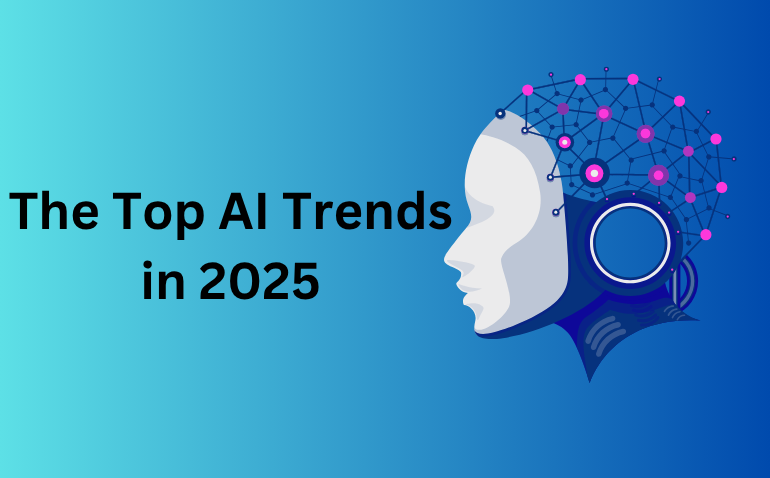Table of Contents
The Top AI Trends to Watch in 2025: How Artificial Intelligence Is Transforming the World
Artificial Intelligence (AI) is no longer just a buzzword—it’s a driving force behind technological change across nearly every sector. As we enter the second half of the decade, AI continues to evolve with remarkable speed, unlocking new capabilities that are fundamentally altering the way we live, work, and connect.
From generative AI tools rewriting creative workflows to edge computing bringing intelligence to devices, the state of AI in 2025 is not only powerful but increasingly accessible.
1. The Democratization of AI: No-Code and Low-Code Solutions
AI was once the domain of data scientists and machine learning engineers. That’s changing quickly. The rise of no-code and low-code platforms is putting the power of AI into the hands of non-technical users—empowering entrepreneurs, business analysts, and creatives to build and deploy intelligent systems without deep technical knowledge.
Key Highlights:
- Platforms like Google AutoML, Microsoft Power Platform, and Bubble.io allow anyone to train models, automate workflows, or create AI-based applications.
- According to Gartner, by 2026, 80% of AI solutions will be developed using low-code/no-code platforms.
This trend not only accelerates development but also bridges the talent gap by enabling citizen developers to innovate within organizations.
2. Generative AI: The Rise of Creative Machines
Generative AI has taken center stage since 2023, and in 2025, its applications are far more widespread and advanced. Tools like ChatGPT, DALL·E, Midjourney, and RunwayML are enabling individuals and businesses to generate content, images, videos, and even code—ushering in a new era of productivity.
Industry Impact:
- The global Generative AI market is projected to grow from $8 billion in 2022 to over $66 billion by 2025, according to Statista.
- Marketing teams are saving thousands of hours on content creation by integrating tools like Jasper AI, Copy.ai, and Writer.com.
What makes this trend so powerful is its real-time adaptability—generative models are being fine-tuned to custom brand voices, scientific domains, and industry-specific knowledge bases.
3. AI-Driven Cybersecurity: Real-Time Threat Detection
As the volume and complexity of cyber threats grow, AI has become an indispensable ally in cybersecurity. AI and ML algorithms are now capable of identifying threats in real-time, predicting attack patterns, and responding faster than traditional systems.
Stats to Know:
- According to IBM’s 2023 Cost of a Data Breach Report, organizations using AI-driven security detected and contained breaches 28 days faster than those without.
- AI-enabled security platforms like Darktrace, CrowdStrike Falcon, and Vectra AI are actively protecting enterprises from phishing, ransomware, and insider threats.
The integration of AI with Security Information and Event Management (SIEM) platforms also enables more context-aware security, reducing false positives.
4. AI and Edge Computing: Intelligence at the Device Level
The era of centralized AI processing is being replaced by AI at the edge. Edge computing allows devices like smartphones, drones, sensors, and cameras to process data locally, enabling faster responses, lower latency, and greater data privacy.
Key Forecast:
- IDC predicts that by 2025, 65% of AI inference tasks will be performed on edge devices.
This trend is especially important in:
- Healthcare: for real-time diagnostics in remote areas.
- Manufacturing: for predictive maintenance.
- Autonomous vehicles: where real-time decision-making is critical.
With edge AI chips like Apple’s Neural Engine or NVIDIA Jetson, we’re entering a future where every smart device becomes a tiny AI engine.
5. Explainable AI (XAI): Building Trust Through Transparency
As AI systems grow more complex, users and regulators are demanding that these models be understandable and auditable. Explainable AI (XAI) is a trend focused on making AI decision-making processes more transparent.
Industry Insight:
- A PwC survey revealed that 85% of executives believe AI models must be explainable to gain user trust and meet regulatory requirements.
- Regulatory frameworks like the EU’s AI Act classify non-transparent AI systems as high risk.
XAI is especially important in sensitive sectors like finance, healthcare, and criminal justice, where decisions must be justifiable and fair.
6. AI in Healthcare: Diagnosis, Drug Discovery, and Patient Care
Healthcare continues to be one of the most impacted sectors by AI. From detecting diseases earlier to personalizing treatments, AI is creating better patient outcomes while optimizing operational efficiency.
AI Applications in Healthcare:
- AI imaging tools like PathAI and Google Health detect cancer and retinal diseases with high accuracy.
- AI chatbots and virtual assistants are being used for symptom checking and mental health support.
- AI in drug discovery is helping shorten development cycles from 10 years to less than 3.
According to McKinsey, AI has the potential to generate over $360 billion annually in value for the U.S. healthcare system alone.
7. Natural Language Processing (NLP): Understanding and Generating Human Language
NLP has seen exponential progress in the past few years. In 2025, advanced NLP systems can summarize, translate, reason, and generate coherent text across domains.
Market Overview:
- The NLP market is expected to reach $98 billion by 2027, growing at a 25.5% CAGR, according to Statista.
- Tools like GPT-4, Claude, and LLaMA 3 are being used in legal, medical, and technical sectors to automate knowledge work.
From virtual assistants like Siri and Alexa to customer service chatbots and AI-based content generation, NLP is becoming foundational to modern digital experiences.
8. AI Ethics and Regulations: Responsible AI Development
With great power comes great responsibility. As AI systems influence decisions in hiring, lending, and law enforcement, the need for ethical oversight is more critical than ever.
Key Developments:
- The European Union’s AI Act sets a global precedent for regulating high-risk AI applications.
- Initiatives like AI Bill of Rights in the U.S. promote fairness, accountability, and transparency in algorithmic decisions.
In 2025, ethical AI is not just a corporate initiative—it’s a legal and reputational necessity.
9. AI-Powered Automation: Revolutionizing Enterprise Operations
From HR to logistics, AI-driven automation is streamlining business processes and unlocking massive efficiencies. Robotic Process Automation (RPA), combined with AI, is replacing manual and repetitive tasks, freeing teams to focus on strategic work.
Impact Stats:
- Deloitte reports that 73% of organizations are using AI in at least one business function as of 2025.
- AI-powered tools are automating invoice processing, fraud detection, and customer segmentation at scale.
This trend isn’t about job elimination—it’s about augmentation, allowing human workers to work smarter.
10. AI in Education: Personalized Learning Experiences
AI is revolutionizing education by offering personalized learning journeys, intelligent tutoring systems, and real-time feedback.
Innovations:
- Khan Academy has launched Khanmigo, an AI tutor that adapts to students’ learning styles.
- Coursera, Duolingo, and Quizlet are integrating AI for dynamic content delivery and language translation.
- Predictive analytics help institutions identify at-risk students early.
By 2025, the AI in education market is estimated to surpass $20 billion, enabling adaptive learning at scale.
11. AI for Sustainability and Climate Action
AI is now being harnessed for tackling climate challenges. From optimizing energy grids to monitoring carbon footprints, AI plays a crucial role in achieving sustainability goals.
Key Applications:
- Google’s DeepMind has improved the energy efficiency of data centers by up to 40% using AI.
- Climate AI startups are using predictive modeling for wildfire prevention and water conservation.
By turning massive datasets into actionable insights, AI can accelerate climate action across sectors.
Final Thoughts: The Road Ahead for AI
AI in 2025 is no longer about the future—it’s shaping the present. From healthcare and education to cybersecurity and sustainability, AI is redefining industries at their core. The trends highlighted here are just the tip of the iceberg.
As organizations look to stay competitive, understanding and embracing these AI trends will be essential. But more importantly, ethical and inclusive AI development will determine whether this powerful technology truly serves humanity.


